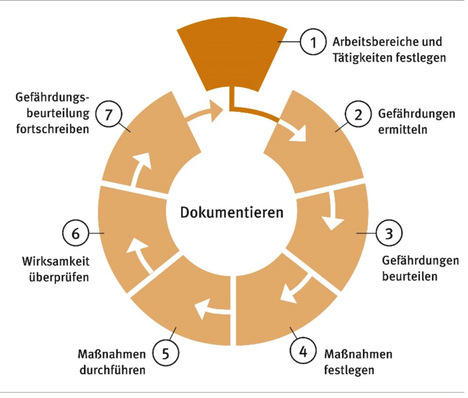Basics of Climate Change with an Outlook of the World in 2100
For many years, there was a heated global debate about whether man-made climate change even exists. A lot of time was lost in the process. In the meantime, the signs of climate change are visible everywhere. The following is a brief summary of the most important basics of climate change in order to understand why it is so important to convince as many people as possible as quickly as possible that they can contribute to slowing down the progression of climate change through mitigation measures and limiting possible consequential damage from climate change through adaptation measures. Adaptation to the health-related consequences of climate change is a key topic for doctors in occupational, social and environmental medicine, as they can contribute as experts in their field to the implementation of appropriate measures in their area of work. The articles in this issue, which focus on “Climate change and health”, are intended as starting points for this. Lotte Habermann-Horstmeier
Das 1,5-Grad-Ziel
Das Ziel, den anthropogenen globalen Temperaturanstieg bis zum Jahr 2100 möglichst auf 1,5 Grad Celsius zu begrenzen, gerechnet vom Beginn der Industrialisierung (Mittelwert der Jahre 1850 bis 1900), wurde im Jahr 2015 auf der Pariser UN-Klimakonferenz von der überwiegenden Mehrheit der Staaten beschlossen. Betont wurden dabei die Vorteile gegenüber einer durchschnittlichen Erwärmung um 2 Grad, die mit deutlich stärkeren Folgen für Umwelt und Mensch einhergehen würde.
Trotz dieses Beschlusses steigt der weltweite CO2-Ausstoß weiter an. Mittlerweile ist es sogar unwahrscheinlich, dass das 2-Grad-Ziel eingehalten werden kann. Gleichzeitig wird es immer wahrscheinlicher, dass es durch das Erreichen verschiedener Kipppunkte zu einer weiteren Beschleunigung des Klimawandels kommt.
Wird der globale Ausstoß von CO2 und Methan nicht umgehend drastisch reduziert, steuern wir auf ein 3- bis 6-Grad-Szenario für das Jahr 2100 zu.
Interessenkonflikt: Die Autorin gibt an, dass kein Interessenkonflikt vorliegt.
Literatur
IPCC: Summary for Policymakers. In: Global Warming of 1.5°C. An IPCC Special Report on the impacts of global warming of 1.5°C above pre-industrial levels and related global greenhouse gas emission pathways, in the context of strengthening the global response to the threat of climate change, sustainable development, and efforts to eradicate poverty. Cambridge, New York: Cambridge University Press, 2018, S. 3–24 (https://www.ipcc.ch/sr15/).
Weitere Infos
IPCC: Climate Change 2021: The Physical Science Basis. Working Group I Contribution to the Sixth Assessment Report of the Intergovernmental Panel on Climate Change, 2022
https://report.ipcc.ch/ar6/wg1/IPCC_AR6_WGI_FullReport.pdf
IPCC: Climate Change 2022: Impacts, Adaptation and Vulnerability. Working Group II Contribution to the Sixth Assessment Report of the Intergovernmental Panel on Climate Change, 2022
https://report.ipcc.ch/ar6/wg2/IPCC_AR6_WGII_FullReport.pdf
IPCC: Climate Change 2022: Mitigation of Climate Change. Working Group III Contribution to the Sixth Assessment Report of the Intergovernmental Panel on Climate Change, 2022
https://www.ipcc.ch/report/ar6/wg3/downloads/report/IPCC_AR6_WGIII_Full…
IPCC: Special Report on the Ocean and Cryosphere in a Changing Climate, 2019
https://www.ipcc.ch/srocc/
IPCC: Special Report. Climate Change and Land, 2019
https://www.ipcc.ch/srccl/
IPCC: Synthesis Report of the IPCC Sixth Assessment Report (Ar6). Longer Report, 2023
https://report.ipcc.ch/ar6syr/pdf/IPCC_AR6_SYR_LongerReport.pdf
United Nations & Framework Convention on Climate Change: Adoption of the Paris Agreement. Conference of the Parties. Twenty-first session, Paris, 30 November to 11 December 2015
http://unfccc.int/resource/docs/2015/cop21/eng/l09r01.pdf
Definition
Die Begriffe Klimawandel und Klimakrise werden synonym für den derzeit stattfindenden anthropogenen Klimawandel verwendet. Die wichtigsten Kennzeichen des Klimawandels sind die globale Erwärmung und die Zunahme von Extremwetterlagen, die mit einem Anstieg der Meeresspiegel, einer weiter zunehmenden Luftverschmutzung und einem drastischen Rückgang der Biodiversität einhergehen. Hauptursache ist die vermehrte Freisetzung klimarelevanter Gase wie CO2 und Methan in die Atmosphäre durch den Menschen.
Info
Was sind Kipppunkte?
Kipppunkte sind Ereignisse, die den Klimawandel global und sprunghaft deutlich beschleunigen und die wahrscheinlich überwiegend nicht mehr rückgängig gemacht werden können.
Sie können ausgelöst werden durch
Info
Wie wird eine um 4 Grad wärmere Welt im Jahr 2100 aussehen?
(z. B. hinsichtlich der Artenvielfalt sowie der Stickstoff- und Phosphorkreisläufe).
Quelle der Inhalte: In Anlehnung an das Banner „FÜR DIE ZUKUNFT UNSERER KINDER“ der
Deutschen Allianz Klimawandel und Gesundheit e.V. (KLUG); https://www.klimawandel-gesundheit.de/
Kontakt
Das PDF dient ausschließlich dem persönlichen Gebrauch! - Weitergehende Rechte bitte anfragen unter: nutzungsrechte@asu-arbeitsmedizin.com.








